Building a tiny house isn’t uncharted territory anymore, but it is still a fledgling industry. Tiny house construction involves considerations that aren’t intuitive… even to experienced builders.
This article was originally written as a fan page for Andrew and Gabriella Morrison’s tiny house workshops. They seemed to have moved on to other things, according to a light google search. But these mistakes are still worth trying to avoid if you can!
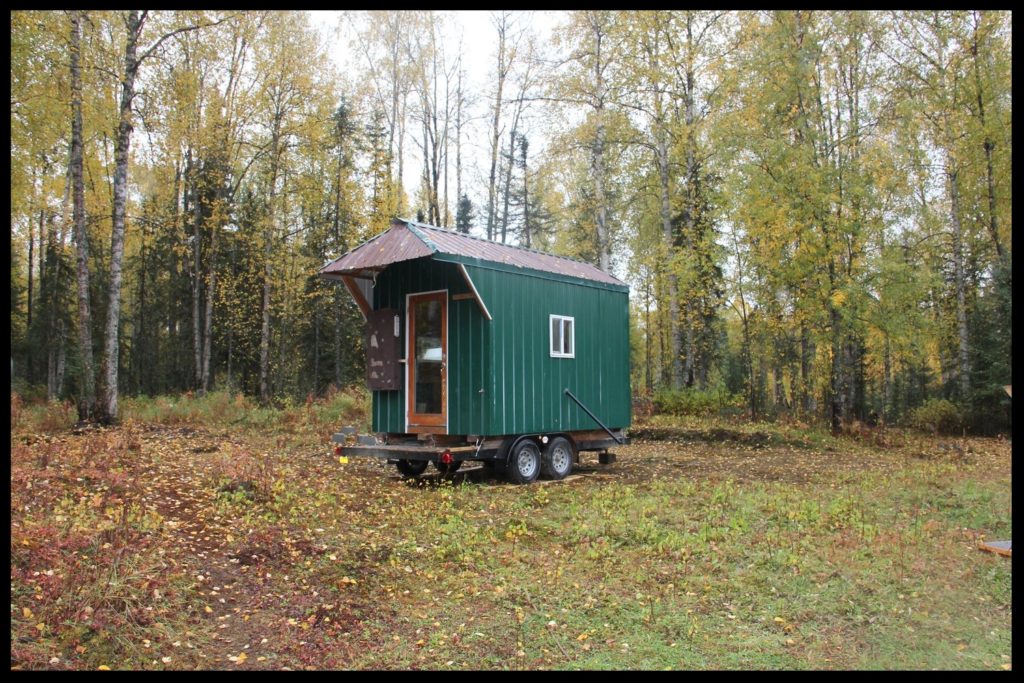
The tiny house workshop covers how to build a tiny house on a trailer, foundation, or a surprising third option! Pictured: an awesome tiny house I stayed in while work-exchanging on a permaculture farm in Talkeetna, Alaska.
TinyHouseBuild.com’s workshop weekend packs an incredible amount of information into sixteen hours – from building codes to zoning issues, from little-known safety issues to well-known risks, and from surprising to not-so-surprising ways to waste your money and time when building a tiny house. Need convinced that taking a workshop before you build (or hire someone to build) your tiny house provides a massive return-on-investment? Check out this sampling of mistakes a tiny house workshop will keep you from making:
.
GENERAL Mistakes
a Tiny House Workshop
Keeps You From Making
.1. Ruining the tiny house industry
Sorry to get so heavy right off, but the tiny house world is fragile right now. Certain zoning laws, codes, HOA regulations, building permit standards, CC&Rs, etc. are currently unfriendly to tiny housing. If you mess up your tiny house build, your mistakes will definitely cost you. However if those mistakes impact someone’s life, your neighborhood, community infrastructure, etc, the negative press will affect the entire tiny house world.
2. Thinking you can’t afford a tiny home
Andrew Morrison – the TinyHouseBuild.com workshop presenter – mentioned the average american can save $8,000-10,000 a year if they get rid of their excesses. If you’re dreaming of tiny house freedom but living paycheck to paycheck, you might think you’re well below that “average.” But wait. Do you have cable? How much processed food is in your cupboards? Was your vehicle built withing the last 15 years? How many smartphones, tablets, and computers are in your home? How many hundreds (or thousands?!) of square feet of your house or apartment do you use less than once a day?

Unless you can build a tiny house for free, you’ll probably have to save up like the rest of us. The great news? The workshop explained that many of the things people cut out of their lives in the name of saving end up being financial burdens they never re-adopt. Just saving for one’s tiny house plans has changed many money habits! photo: seniorliving.org
If the idea of giving up any of these things makes you feel helpless, angry or scares you, look deeper into your motivations to live tiny. A tiny home forces you to simplify; there is little room for excess. Trimming the fat in your pre-tiny life is not only good practice for a tiny-house future, but it can help make your tiny house plans a long-term success.
3. Thinking you’ve learned enough
One workshop participant with a building background said the tiny house workshop reminded him to “keep asking questions… there’s no such thing as TMI.”
Lots of attendees — myself included — took the tiny house workshop to get a handle on everything tiny – from A to Z. If you’re learning how to build a tiny house with no experience, you often don’t know what you don’t know. Even attendees who’d put thousands of hours into YouTube tutorials and reading said they realized personal knowledge deficits in areas they’d never come across before.
4. Letting yourself feel isolated and “crazy”
No doubt at least a few people with whom you’ve shared your tiny house dream have raised their eyebrows in something less than enthusiastic support. Some people might even take your desire to escape “the average” (i.e. 40-50 hour weeks and a 30-year mortgage) as a personal rejection.

It can be hard to keep your tiny house dream alive and moving forward if you’re surrounded by people who aren’t inspired by the tiny movement. However, there are great tiny-house communities made up of just the kind of people you meet at a tiny house workshop! photo: elisariva
It can be hard to march to the beat of your own drum. Many tiny house workshop participants cited the ability to network in a group setting, the chance to connect with other tiny housers, and the opportunity to be a part of a tiny house community as one of their main reasons for attending a tiny house workshop. Attendees became fast friends as they encountered others who shared their tiny lifestyle dreams.
5. Missing out on questions you didn’t think to ask
Several tiny house workshop participants commented on how helpful it was to sit in a room and hear other’s questions. They loved being able to think about each concern as it applied to their own situation, as well as being able to get a personalized response if necessary.
.
LEGAL Mistakes
a Tiny House Workshop
Keeps You From Making
6. Investing in an illegal home
Many tiny house dreamers are surprised that the labyrinth of red-tape in our western world creates some hurdles for tiny house life.
For example, in some municipalities, there are regulations against occupying a temporary structure for more than a few days, weeks, months… or at all. (A moveable tiny house is often considered a temporary structure). In other places, there is a minimum specified square footage for a home, which is often well above tiny house size. Sometimes a tiny house is only legal if it’s certified as an RV – a classification that’s -1st – difficult to get and – 2nd – dooms the same tiny house to be illegally parked or be considered an illegal structure in other cites or neighborhoods.
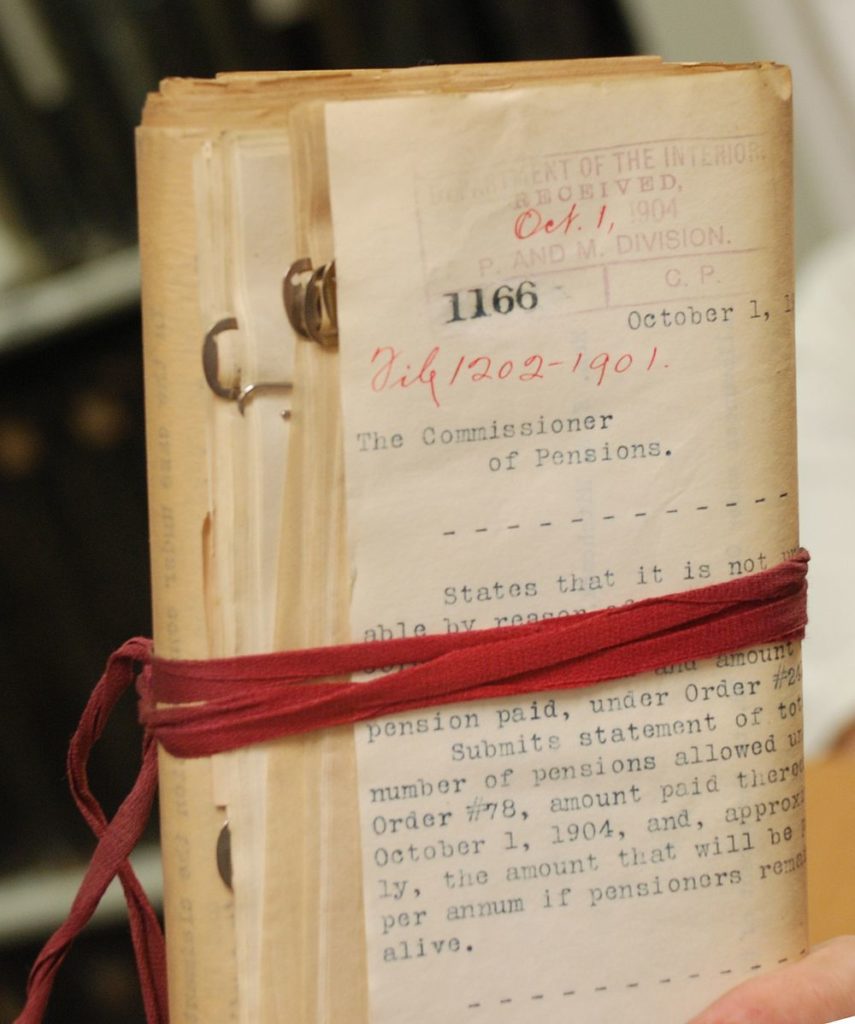
People looking to learn how to build a tiny house with no experience might not be aware of the red tape they could encounter while drawing up their tiny house plans. photo: jarek tuszyński
The couple behind TinyHouseBuild.com’s tiny house workshops are campaigning hard for the red tape changes that would knock down some of the current hurdles facing tiny housers. Until the creaking bureaucracy catches up, knowing how to navigate the labyrinth of codes and zoning is priceless.
7. Paying for certifications that don’t matter
Some tiny house DIYers are fooled into paying for illegitimate certifications from businesses who have no jurisdiction to certify. Understanding which stamps of approval you actually need (and actually need to pay for!) to be able to live legally in your tiny home is a budget and time saver.
8. Playing your cards too early with the building department
If you’ve never had to deal with the city or county offices that regulate what can and can’t be done or built on a piece of property, take a deep breath.
The tiny house workshop provided excellent tips about how much to reveal when first contacting a building department about building your own tiny house… including how to get accurate information without giving away your position and possibly getting yourself blacklisted.

If you’re one of many who wants to build a tiny house with no experience, the building-department learning-curve is almost unavoidable. The tiny house workshop explained how to keep your cards close to your chest and ensure a win-win situation for all involved. photo: pixabay
Knowing what questions to ask and how to get the answers you need is a critical first step toward legally enacting your tiny house plans.
9. Taking no for an answer
Rules were made to be broken, right? The tiny house workshop revealed many avenues of hope.
Just because you encounter building codes, zoning regulations, etc., that seem to prevent tiny house living doesn’t mean you have to give up your tiny house dreams. Knowing how to help officials to create safe exceptions to the rule could make or break your tiny house plans.
10. Thinking any plumber or electrician will help you meet requirements.
Planning to teach yourself how to wire or plumb a structure, do it yourself, and then get an electrician or plumber to sign off on it? It might not be as easy as you think.
Any red-tape difficulties surrounding your tiny house might inspire you to get creative. However professionals who stand to lose their licenses might not be so willing to jump onboard with your ideas. You could be unknowingly backing yourself into a corner if you don’t understand the reasons building professionals might be reluctant to participate in your tiny house build. Knowing in advance how to succeed in the face of technicalities is critical for ending up with a legal, habitable structure.
.
SAFETY Mistakes
a Tiny House Workshop
Keeps You From Making
11. Giving yourself cancer
You know all those awesome, cheap, lightweight materials they use in RVs? Many of them are super toxic. The tiny house workshop explained which materials are the biggest culprits for off-gassing poisons into your living/breathing environment. Suddenly the extra $1,000 for a better material doesn’t seems so bad!

On second thought, a gas mask looks good on you. If you make it a permanent accessory, building a tiny house with cheap, toxic materials might work out after all! photo: pixabay
12. Creating lethal conditions in your home
Not understanding things like airflow science can turn your home into a bomb. If you want to avoid a future where you’re making dinner and suddenly your whole home explodes, a tiny house workshop is a good investment.
13. Letting a run-away trailer kill someone
Who knew that the way you set yourself up to brush your teeth, do your dishes, and flush your tiny home toilet has the potential to kill?
The balance of weight in your moveable tiny home will be critical when towing. Failing to think about weights that have a potential to shift – e.g. all your possessions, water as it moves from the fresh tank to the grey or black water – can upset the important 60/40 trailer balance. Losing control of your tiny home while traveling down the road could kill you, your passengers, and other road users around you.
14. Burning down your best friend’s house
You watched YouTube videos, you read articles, and you confidently wired up your tiny home. You’ve been traveling across the country having the time of your life, and you’ve even stayed at a few RV parks. You bring your awesome tiny house to your best friend’s house. Like usual, you get everything level and plug in. Then you head out for some beers.
You return to find both your homes have been reduced to ashes. Your DIY electrical education didn’t teach you that plugging your tiny home into the wrong type of household outlet would start a fire. Ahhh!
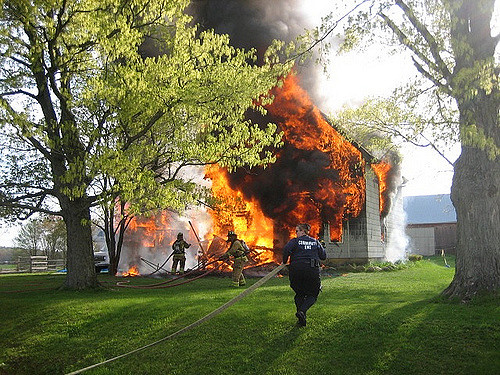
Looking for way to build a tiny house cheaply? Don’t sacrifice safety in the process! photo: flickr
No, electrical wiring isn’t rocket science. Yes, doing it wrong can cost your home or your life. As our tiny house workshop presenter, Andrew Morrison, put it:
“Winging electrical is like
checking for gas leaks with a match.”
.
QUALITY OF LIFE Mistakes
a Tiny House Workshop
Keeps You From Making
15. Stagnating forever on your dream.
For many tiny house workshop attendees, being part of a workshop weekend was a momentum-building step. They’d watched hours of videos and documentaries, read books and articles, toured tiny homes, and maybe even taken building classes.
Some said participating in the tiny house workshop was the perfect way to take their tiny house aspirations from dreaming to doing.
16. Buying the wrong piece of land
Along with the usual considerations that go into buying property (which the tiny house workshop covered), a tiny houser has additional land considerations.
We heard several land-purchases-gone-awry stories. One involved discovering regulations (after building) that cost the owners almost half the build price of their new tiny home! Many tiny house workshop attendees cited property lessons as their top workshop takeaway, saying things like, “this workshop kept me from just impulsively buying land.”
17. Making design choices you regret
The tiny house workshop covered a few commonly neglected design areas. One builder shared how a thoughtless lighting choice in a home he built left the living room lights useless. No matter where the furniture was placed, the immovable lights shined straight into the faces of people sitting on sofas or chairs!
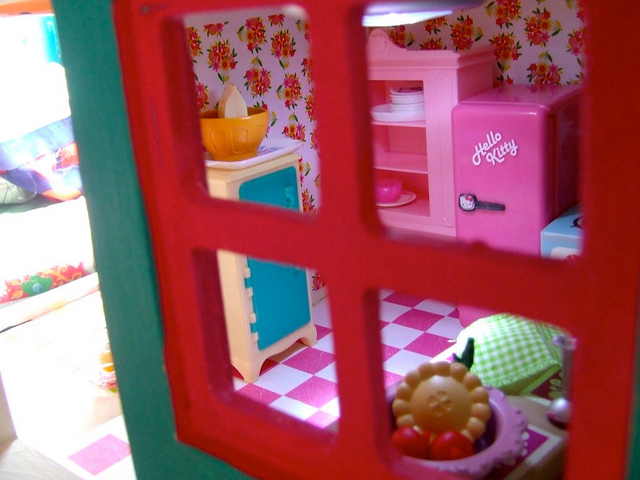
Maybe putting the bathroom and kitchen side by side out of plumbing convenience wasn’t such a great idea after all? photo: gushi soda
Finding out where people tend to go wrong was a great starting place for thinking through small but impactful design components.
18. Living with incessant squeaks
If you’re like me, little creaks and squeaks can quickly drive you batty. My jaw dropped over some of the floor and loft squeak-prevention-practices that the tiny house workshop covered. They’re the kind of thing that’s common sense only after you put up with years of squeaking… or get the advice of a seasoned builder.
19. Underestimating the importance of climate control decisions
I was surprised to learn how easy it is to end up with a tiny home that never gets warm or that’s impossible to cool. Unexpectedly, the much smaller living space offers a smaller margin for error when selecting heating and cooling strategies.

This is how you might end up if you skip doing the heating and cooling calculations when you are working on your tiny house plans! photo: langll
We learned how to calculate a tiny home’s needs and that – for example – it’s really easy to get an underpowered cooling system if you don’t know how a calculation exception applies to a tiny house.
20. Thinking living off-grid is as easy as living on-grid
Many of us who dream of the freedom of unplugging and living fully off-grid were surprised to hear that getting the best performance out of a solar system is a months-long science experiment that takes one’s daily attention. Battery maintenance is an omnipresent task, along with constant awareness of how the weather is affecting your system and power levels. Going off-grid is a little less carefree than most of us tiny house workshop attendees expected.
21. Ending up with no counter space in your kitchen
Without the proper encouragement, you might never mentally fill your tiny house cupboards before ordering your first set of materials. The tiny house workshop pointed out how easily people have forgotten things like their coffee-grinders, toasters, vitamix blenders, etc. In a tiny house, there is little recourse for forgotten space needs.
.
MONEY & TIME Mistakes
a Tiny House Workshop
Keeps You From Making
22. Losing your house to the bank before its finished
Hands-down the biggest mistake our tiny house workshop presenter sees in building: underestimating costs. When people run out of money halfway through a build, there is little recourse. It’s nearly impossible to get a new loan.
The tiny house workshop explained lending structures that can help assure financial means for completing your build while avoiding over-extension or unnecessary loan quantities.
23. Buying tools you don’t need
The tiny house workshop debuted with great news – it’s possible to build a tiny house with no experience and without buying thousands of dollars in tools!
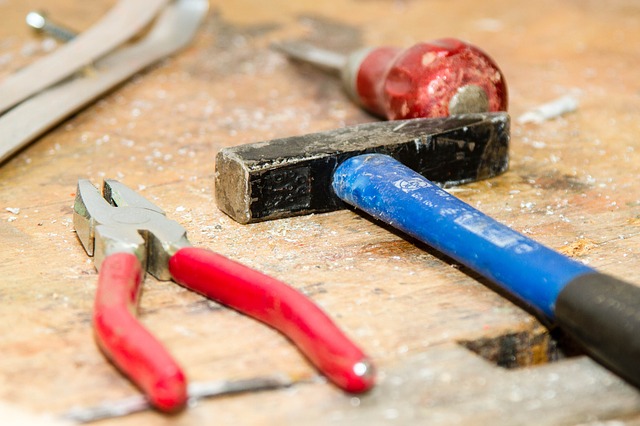
Not all tools are worth buying when you build your own tiny house. Others are critical to making the tiny house construction process go smoothly. photo: tibine
Our presenter revealed which tools we’d be wise to buy and which can be rented or borrowed. He also covered tool resources especially helpful to those needing to figure out how to build a tiny house cheaply.
24. Building a home you can’t move yourself
You don’t have to own a towing vehicle that costs as much as your tiny home, even if you choose to build a tiny house on a trailer. However, your plan to rent a truck to move your tiny home might not be the ace in the hole you think it is.
If your home weighs too much, you’ll either need to hire someone or get a special driver’s license to drive the necessary rented truck. Said license requires ongoing drug testing, a yearly physical, fees, and can be lost to a DUI.
25. Facing unexpected future moving costs
From permits to fuel economy, many people don’t think of the expenses that come after you build your tiny home. Post-build costs are highly dependent on the choices you make in design and building.

Keep the calculator running after you’re done tallying up your tiny house construction costs. Ongoing costs of tiny home life are impacted greatly by decisions made during the build process.
We learned how many miles to the gallon different types of tiny homes get in transit. The tiny house workshop also revealed what happens if you fail to stay within road width and height limits: moving your home might end up requiring special, expensive crews that move at a snail’s pace as they jump bureaucratic hurdles with your home in tow. Knowing these things in advance will help you know when you’re taking a design risk and will help you weigh the consequences while you still have a choice.
26. Building on the wrong surface
Maybe because so many tiny house enthusiasts dream of freedom, putting a tiny house on wheels seems like a no-brainer. But you don’t have to build a tiny house on a trailer.
We talked about the three main foundation options and discussed the practical applications for each. One tiny house workshop attendee said, “I will only be moving my tiny house one or two times. Thanks to the workshop, I’m no longer building on a trailer bed and that will save me big $.”
27. Literally building barriers
Although framing the walls is one of the first things you do, it impacts many of the final phases of your tiny house build. We learned all the little pre-framing things people tend to miss that come back to haunt them later – from not realizing their shower won’t fit through the main doorframe to being stuck with a heating stove that doesn’t allow them to take advantage of a suddenly abundant resource.
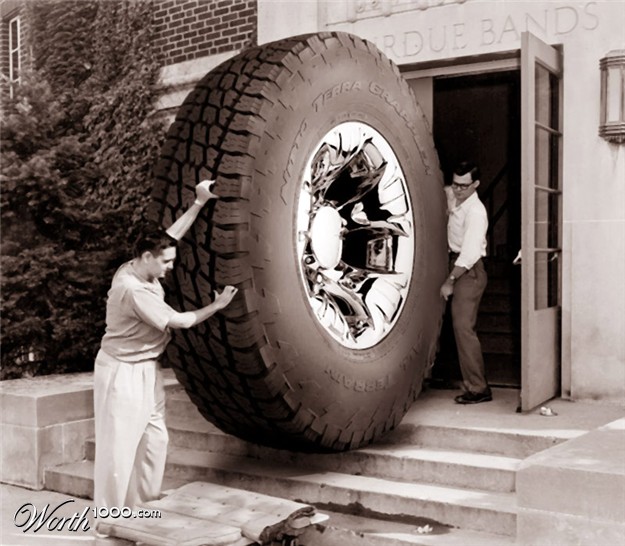
Pro-tip: be sure everything that won’t fit through the front door is in the tiny house before the walls go up! photo: fukuleaks
28. Installing, then re-installing
The tiny house workshop explained the very specific order of operations that is the most time and cost efficient when you build a tiny house. Many of these things weren’t common sense. We heard plenty of fun stories about lessons learned the hard way! E.g. who knew that even the timing of installing your sink into your counter top can create or save massive headaches?
29. Missing out on tiny house technologies
All of the tiny-house specific materials and techniques taught in the tiny house workshop really impressed me, from the many space-saving, eco-friendly materials to longevity practices to tiny-specific equipment.
30. Accelerating the degradation of your structure
When you build your own tiny house, several critical steps keep your home from quickly withering. The tiny house workshop explained common errors that can decimate your wallet and cost you years of material performance.

“But we just painted last year!” photo: fen-tastic
For example – you might save time by not priming the back of your siding or skipping a (little known!) paint-sprayer step… both of which will costs you the entire time and materials investment again just a year or two down the road.
31. Thinking alternative-living exempts you from mainstream costs
I’ll be the first to cheer you on if you’re choosing a composting toilet. However, don’t be so sure your awesome toilet alternative will save you the cost of a septic system.
Our tiny house workshop presenters discovered late in their own build that a permit they needed to live legally hinged on them having an $18,000 septic system… despite the fact their waste was already being properly managed. Ouch!
32. Buying the same thing twice
One of the most sobering arguments to build a tiny house (which our tiny house workshop presenter mentions in his TED talk): the average person with a 30 year mortgage ends up paying enough to buy their home three times over. Yikes.
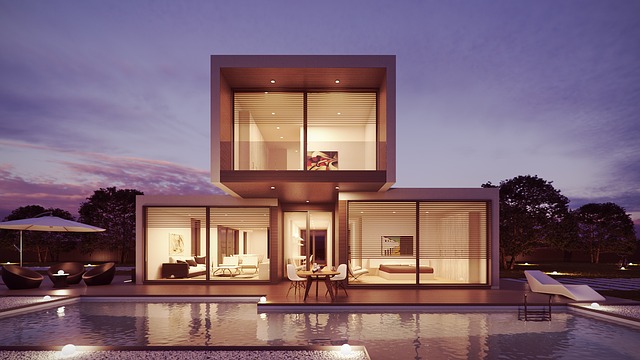
I guess if you’re going to buy a home three times, you could build it in three distinct sections to match? photo: pixabay
While building your own tiny house can save you from the mortgage burden, planning for growth and change can save you from paying for other things twice. Example: our workshop instructor opted for a bigger solar inverter than their first system needed, making a future upgrade far cheaper.
33. Paying for impatience
Especially if you build a tiny house step by step on nights and weekends, sometimes it’s hard to see the light at the end of the tunnel. The desperation to finish can increase the temptation to cut corners. The tiny house workshop taught us about common shortcuts that people later regret (and that some people didn’t even realize they were taking). Example: not letting wood flooring acclimate for a week in its final environment. Skipping this step usually creates buckling or major gaps.
34. Being unprepared for insanity
Yes, building your own tiny house is an incredible adventure. Like any new undertaking, the learning curve involves plenty of hard work and frustration.
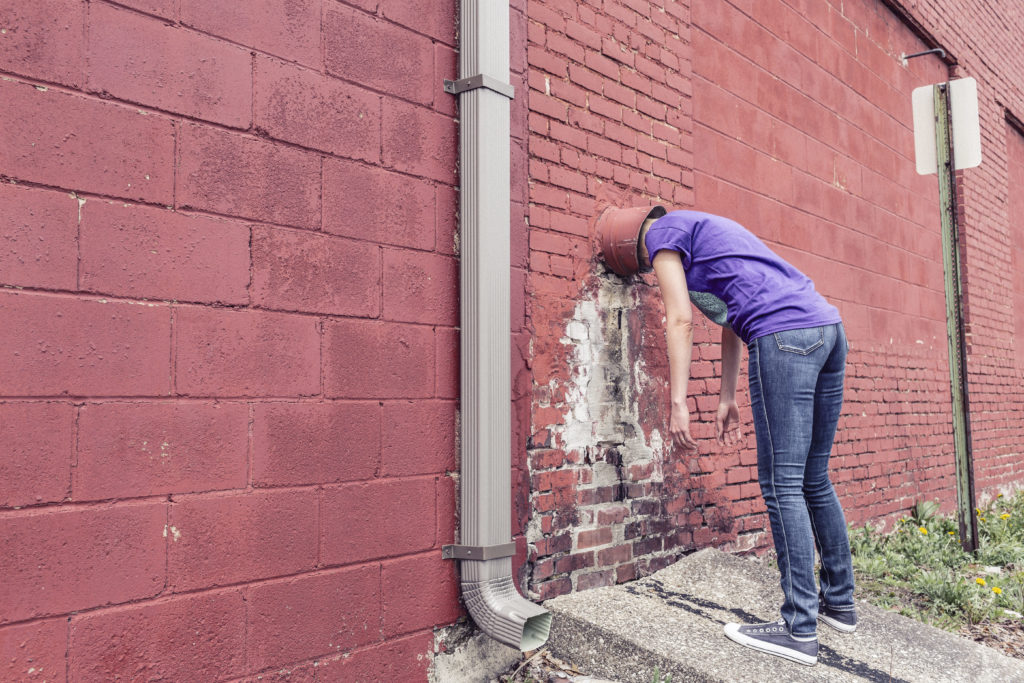
Don’t forget… like any new challenge, building your own tiny house will test your patience and your limits. Plan for it and your tiny house construction project will go more smoothly! photo: gratisography
None of us tiny house workshop attendees anticipated we would learn how to handle the stresses of tiny home construction. However, many participants agreed that this information was the most unexpectedly useful part of the workshop!
35. Believing ability-to-build = ability-to-live
Just because you’re able to build a tiny house doesn’t necessarily mean you’ve cultivated the skills, lifestyle, and attitude it takes to live in less than 400 square feet.
As mentioned before, not everyone realizes that a tiny house requires simplicity. While many tiny house dreamers are keen for a less-is-more freedom, others don’t realize they aren’t ready to give up certain “more-is-more” features of their life… until after move-in day.
♣
That’s it! If you’ve taken a tiny house workshop, feel free to chime in below with the mistakes a tiny house workshop kept you from making.




Hi!
thanks for this article!
I’m curious, when you mention “you don’t have to build a tiny house on a trailer.”, what do you imply?
If the tiny house is under 400 square feet, what other options do we have than a trailer?
Kindly,
Lynda
Hi Lynda! Tiny houses can be built on foundations or skids, too. If you have the right size fork lift, you can use it to load the skid onto a flatbed truck if you ever want to move your tiny house. You can also drag a skid, although there are lots of factors to consider if doing so. (If you do think you’ll eventually move a tiny house on a skid with a flatbed semi, it’s really important to think about height. If there are high voltage power lines that stand between you and your destination, it becomes (potentially prohibitively) expensive and time consuming (paperwork) to get it moved. Good luck!